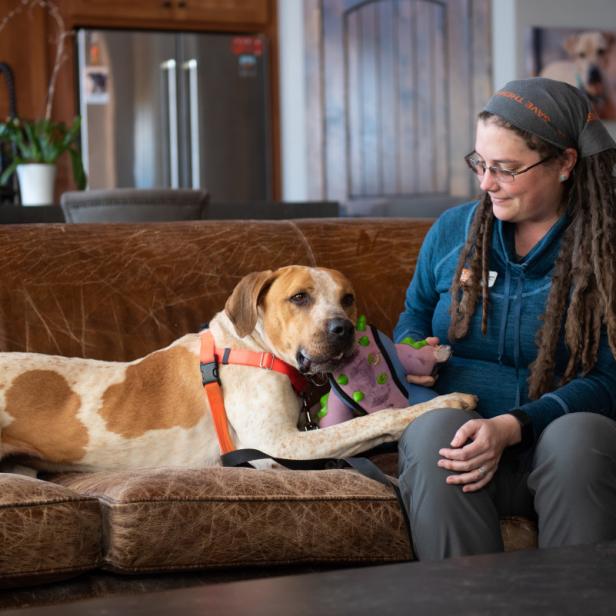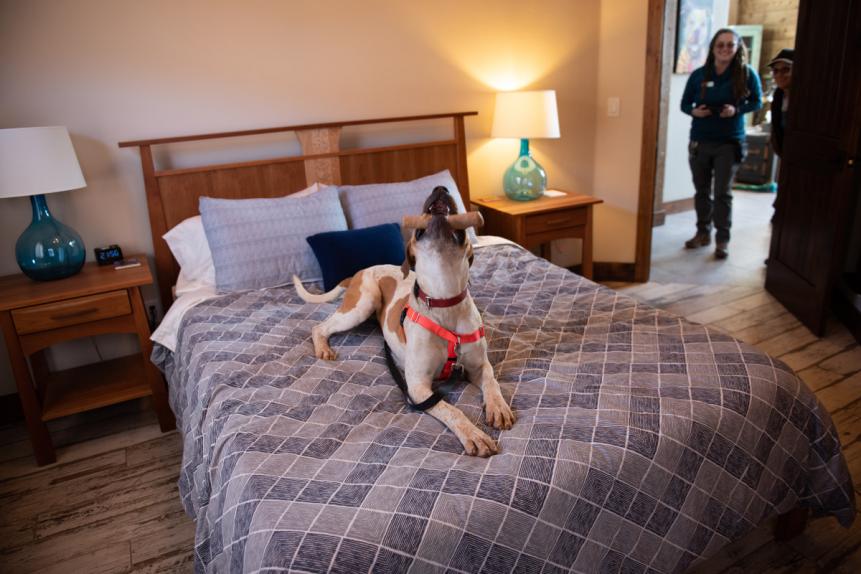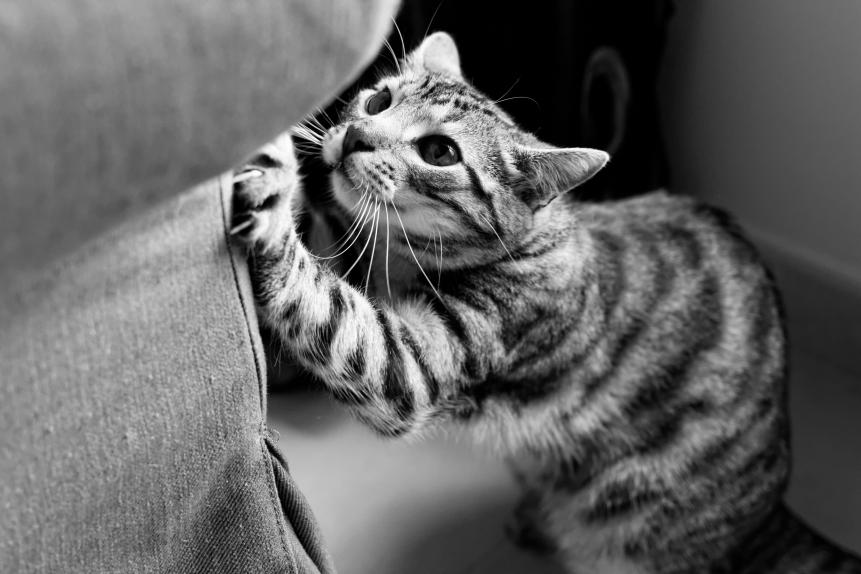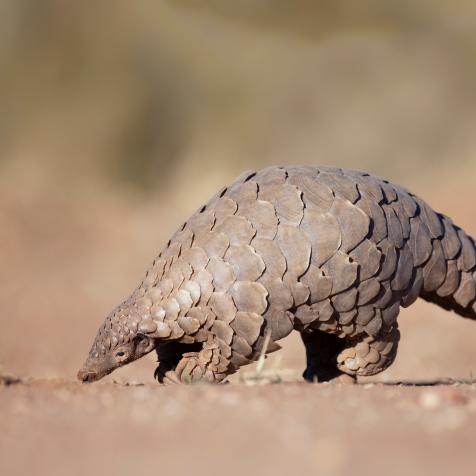
Best Friends Animal Society
Experts Say Plan Now for Pet Separation Anxiety
For many people, the silver lining of the pandemic is the time we've been able to spend with our furry friends. But, as places begin to open up, the separation will be hard. Here are a few ways to get your pet ready for the time when you go back to work.
We have all been so grateful for our pets during this time of sheltering in place and social distancing. We are lucky to have them, and we need to be sensitive as we start to head back to work and school when the world becomes somewhat "normal" again.
Signs of Separation Anxiety
Experts at Best Friends Animal Society (BFAS) have come up with some signs to look out for that can signal that our dogs and cats are suffering from distress caused by separation anxiety.

Best Friends Animal Society
Dr Carley Faughn and Terry Tate take Titus into a volunteer's home to see how if he can relax in a home setting.
- Barking, howling, or whining when you leave (not just in response to noises outside of the home), especially for longer than 30 seconds.
- Scratching or chewing at entrances and exits (doors/windows)
- Destructive behavior that only happens when the dog is alone
- Over-grooming or other self-harm or obsessive behaviors
- A change in appetite
Tips for Pups
Our dogs show so much joy when we return home during normal times, and they are truly excited to see us. Janelle Metiva, a CPDT-KA and dog behavior specialist at BFAS in Los Angeles says, “Most pets don’t like sudden and abrupt changes. Instead, try starting now to get your pet ready and ease them back to your previously ‘normal’ routine more easily.” She supplied some tips to prepare our pets for their impending alone time.
- Create a safe, comfortable place where they can have peaceful, relaxing alone time. This could be a crate or separate room, just make sure it’s the quietest part of the house.
- Provide them with enrichment that can be enjoyed independently, such as hidden treats in boxes, food puzzles, stuffed Kongs, etc.
- Play soothing music such as reggae, smooth jazz, or classical, or play the TV or radio to stations like the BBC or NPR while you’re gone to keep them from being startled by outside noises. You can also try a white noise machine.
- Reward your dog for calm, independent behavior (especially if they're usually clingy). We tend to pay attention to dogs only when they're active or even misbehaving. They should be rewarded for being calm and chill.

spooh
Practicing separation is essential to ease into the next stages. So when you practice leaving for short periods of time to run essential errands or go for a walk, try the below.
- If your dog shows signs of panic, decrease the amount of time that you leave, even if for just a few seconds.
- If your dog barks or paws at the door when you leave, come back only when they're quiet.
- If your dog has trouble being alone for even brief periods of time - consult a Certified Separation Anxiety Trainer (CSAT) who usually offer virtual consultations.
Facts for Cats

Best Friends Animal Society
Norman (fka Kyle) adopted by Quintin de Castro in NYC.
Sometimes our cats make us think they prefer to be alone, but they can experience separation anxiety too.Samantha Bell is a cat behavior specialist with BFAS and according to her, cats who suffer from separation anxiety can become louder than normal or over-groom their fur. Also, their tendency to mark around the house increases as they try and mingle their scents with their owners'.
"Despite stereotypes that say otherwise, many cats form very close bonds with their humans and can become quite stressed when apart,” Bell says. Some activities that she suggests could help prevent the anxious behavior and ease them into the impending separation.
- Engage your cat with a wand toy at least once a day. Allowing your cat the opportunity to hunt, catch, and kill with an interactive toy will help build their confidence and strengthen their bond with you in the healthiest way possible.
- Ensure that whatever adjustments you've made to their routine while you're home are sustainable when you go back to work. If you've started feeding your cats 4 times a day while you're home, start cutting it back to what is doable when you're not working from home.
- If you're not already using them, introduce puzzle-feeders to your cat. Cats instinctively want to forage for their food and puzzle-feeders satisfy that instinct while providing fantastic enrichment during alone time.
- Cats feed off of people’s emotions. So, when it is time to go back to work, making a big, sad, dramatic scene as you leave is only going to make them feel more stressed. A happy, light tone and a little treat as you leave will help keep their spirits up.

Lucio Ferrao
Whether you have a dog or a cat, remember you can always use Best Friends Animal Society as a resource during the tumultuous times of COVID-19.





















